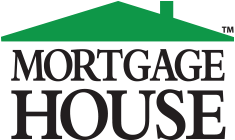Is a Fixed Rate or Variable Interest Rate Home Loan Better?


Variable rate mortgages are the most popular home loans in Australia, however, fixed-rate loans still make up a sizeable chunk of the market. There’s no definite answer about which type is better. It will come down to your needs, financial situation and also the economic climate and property market.
We look at both sides so you can decide if a fixed rate or variable interest rate is better for you and if there is another option.
Fixed Rate Home Loan
Fixed rate home loans have an interest rate which remains constant or fixed for an agreed period of time, usually up to 5 years, though some Lenders may do a fixed rate for up to 10 years. Generally, a fixed rate may be higher than the variable rate available so it’s best to weigh up both the advantages and disadvantages.
Pros
- Fixed rates give you certainty – you’ll know that your mortgage repayments will stay the same for an agreed amount of time. This means that as long as your financial circumstances remain the same or improve, you are guaranteed to be able to pay your mortgage for the duration of your fixed term.
- Your interest rates will not go up with the rest, meaning you do not need to worry if the market rates are going up – your payments will remain the same.
- Knowing your repayments will not rise or fall, makes it easier to budget for repayments without getting caught off-guard with any rate hikes.
- No worries. When your interest rate is set you don’t even need to think about it.
Cons
- If interest rates start to decrease, you won’t see this in your own repayments. It may be frustrating to see others saving with their lower rate while you’re not.
- Many fixed-rate loans provide less flexibility, meaning useful features like offset accounts, which help you pay off your loan faster, may not be included.
- Fixed rate loans can often incur higher switching or exit fees, so refinancing can be costly, and sometimes not worth it when you compare what you would save with the amount it would cost in fees.
Variable Rate Home Loan
While fixed rates stay static, variable rates fluctuate, often rising and falling in line with the market determined by the RBA (Royal Bank of Australia). Variable rates are often lower than fixed rates, however, a variable rate has its own pros and cons.
Pros
- Some lenders like Mortgage House, provides two types of variable loans: basic and standard, standard being more full-featured with extra repayments, offset facilities and split loan options.
- You can often make fee-free extra repayments, meaning you’ll pay off your mortgage faster and incur less interest.
- Likewise, with features like offset and redraw you also have the option to reduce the interest you pay over the life of your loan.
- Variable rates are often easier to refinance than fixed rates, meaning if your loan does not serve your needs, or there is another loan product that provides bigger advantages or lower interest rates, you may be able to swap without much fuss.
Cons
- Variable rates can increase, meaning your repayments will go up as you will pay more in interest. You will have to budget for this and ensure you can keep up with the higher repayments if the rates go up.
- You may think the extra features you get will be beneficial to you, but this may not always be the case. There are many useful features, but you must research those that your Lender is offering you to ensure you are going to use them.
- You may find it hard to budget as your mortgage repayments will fluctuate. Your repayments may increase, and you might find this eats into your family budget leaving little room for planning holidays or other big-ticket expenses.
Split Home Loans
There is a third option which gives you the best of both. A Split Loan allows you to make a portion of your home loan fixed, and a portion variable. You can select the percentage of your loan that you want fixed, and the remaining portion will be variable.
It’s extremely difficult to predict which option will benefit you most, as RateCity proved with a look back at the 90s and 00s:
“Fixing in October 2005 would have saved borrowers 15%, or around $12,200 compared to variable over the following three years. Fixing a home loan rate in September 1991 would have cost a borrower an extra 30%, or $29,800, over the next three years.”
The verdict:
Understanding fixed and variable costs and how they will benefit you personally will help you in your search for a great home loan that will work for you for years to come. You must ensure you can pay your mortgage even if interest rates increase, as fixed rates do not last forever, and variable rates can fluctuate up and down. If you are still wondering which is best for you, or want to learn more about Split Home Loans, speak to one of our Lending Specialists today.
Mortgage House
At Mortgage House, we’re no strangers to the homeowner’s journey. It’s a long (but rewarding) one.
But don’t worry, we can help with that.
If you’re thinking of buying a home, you can contact us for the best options when it comes to your mortgage. We can also tell you about alternative ways of getting into the market with a smaller deposit, like guarantor and family pledge loans. You can use our calculators to find what’s the best loan for you.
